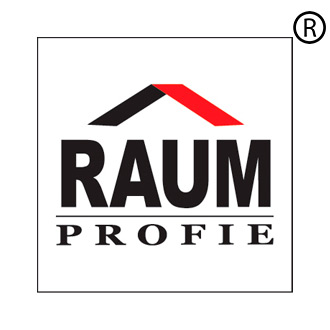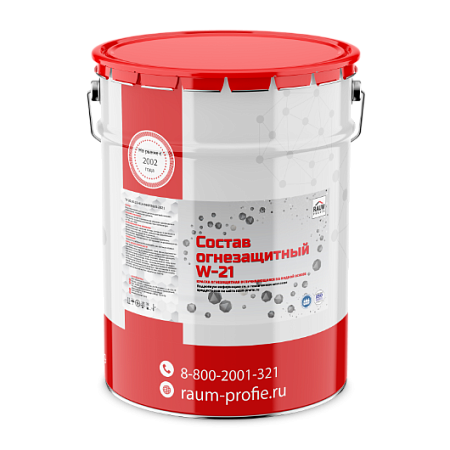Description
Fire-retarding intumescent composition based on water. The composition flame-retardant effect is based on the formation of a thick layer of expanded foam (foam coke) with low thermal conductivity on painted material surface at high temperature. Steam and gases are evolved and the surface is cooled. Does not contain organic solvents, has specific odour which disappear when cured.
Fire -resistance time is 15, 45, 60, 90 min.
Fields of application
The coating based on the flame-retardant intumescent composition is used as protection against open fire or other high-temperature effects of steel and wooden beams, supports, wooden buildings, building structures of industrial and civil construction in indoor and outdoor areas (when using a complex coating) in order to increase their fire resistance limit.Primers such as –У–§-021 (–У–Ю–°–Ґ 25129-82) or –У–§-021 fast drying (–Ґ–£ 2312-008-20514586-04) should be used to form anticorrosion coating for good adhesion to metal. ALURON (–Ґ–£ 2312-016-20514586-2009) material is recommended to use as finishing coating with dry layer thickness no less than 50 microns.
The consumption and thickness of the layer of the applied flame retardant coating depend on mass factor and the rate of flame retardant efficiency.
Instruction for use
Before applying the enamel rust must be removed from the metal surface by any available method (metal brushes, sandpaper or sandblasting). Then the surface is degreased with organic solvents and dried at a temperature close to 20–Њ –° for 2-3 hours. The metal is coated with an anticorrosive primer –У–§-021 with a dry layer thickness of at least 50 microns, drying the primer layer for 24 hours at a temperature of 20–Њ –° and a humidity of no more than 80%. Next, flame retardant is applied layer-by-layer with inter-coat drying for 24 hours.Conditions
The flame retardant coating should be used at an ambient temperature from +5–Њ –° to +30–Њ –°.Air humidity of no more than 80%.
The surface temperature should be at least 3 0C above the dew point to avoid condensation.
Aplication
| Preparation |
Mix before use. The viscosity may increase when stored for a long time. It is allowed to be thinned up to 3-5% with water to achieve the working viscosity when applied by airless spraying with high-pressure devices. |
|
Air-free spraying |
Thinning: 0 - 10 % Nozzle diameter: 0,027"-0,030" Initial pressure:180-200 atm |
| Brush | Use for small areas |
| Roller | Use for small areas |
|
Thinner |
Water |
| Cleaner | Water |
|
Cleaning |
Wash the tools after using immediately. The frequency of washing depends on the amount of sprayed material, the temperature and the time since the shutdown, including any time lag. |

